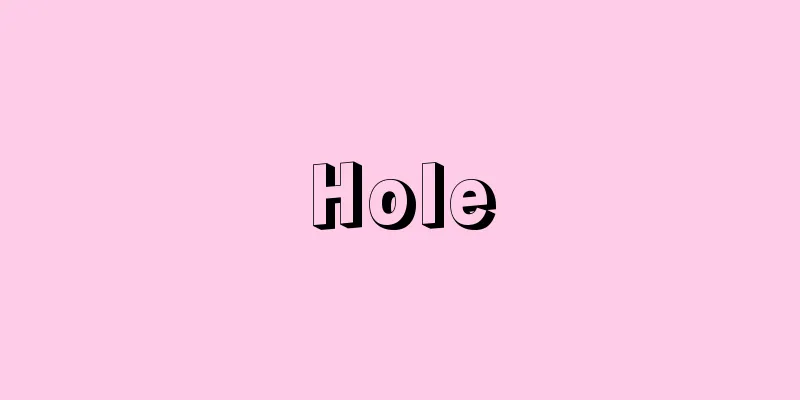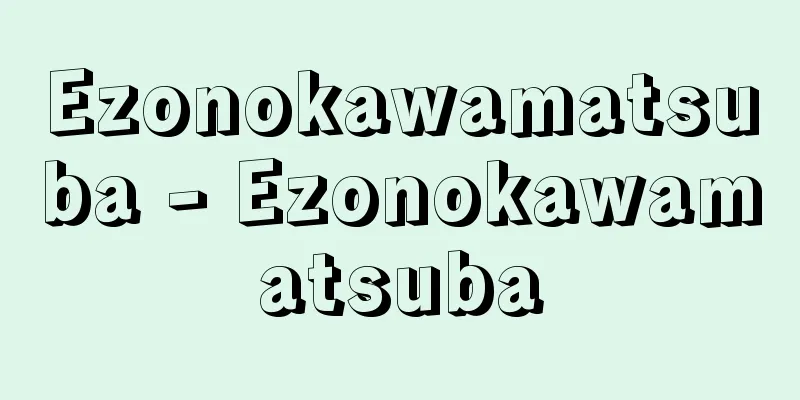Vaccination - prophylactic inoculation

|
A type of prevention method for infectious diseases. It involves building up immunity (resistance) by injecting a substance (vaccine) made from the pathogen into the body through the skin or orally (inoculation). It refers to preventing infection or aggravation in the event of contact with the pathogen. However, vaccination is not completely effective. Depending on their properties, vaccines can be divided into live vaccines, inactivated vaccines, and toxoids (sometimes included in inactivated vaccines). Live vaccines use viruses or bacteria with weakened pathogenicity, inactivated vaccines are made by collecting and purifying viruses or bacteria, then inactivating the pathogen through heating or chemical treatment, and toxoids are made by treating and detoxifying toxins produced during the pathogen's multiplication process. The immunity acquired after vaccination is stronger with live vaccines than with other types. The vaccines used in Japan are: In the history of vaccinations, the most famous is the 18th century smallpox vaccination by Edward Jenner. Since then, as mentioned above, many other vaccines have become widespread. Among them, the Japanese encephalitis vaccine (1954) and the chickenpox vaccine (1987) were developed in Japan before anywhere else in the world. However, even vaccines that are recognized as effective in the West include those that were introduced late in Japan (such as type b influenza vaccine), those with low vaccination rates (measles, chickenpox, mumps, pneumococcus, etc.), and those that have not been introduced in Japan (7-valent pneumococcus, etc.), and it is difficult to say that Japan is an advanced country when it comes to vaccinations (as of January 2009). [Masayoshi Shinjo] [References] | | | | | | | | | | | | encephalitis| | | | | | | | | |Source: Shogakukan Encyclopedia Nipponica About Encyclopedia Nipponica Information | Legend |
|
感染症の予防方法の一種。あらかじめその病原体からつくられた物質(ワクチン)を経皮的・経口的に体内に入れる(接種する)ことで免疫(抵抗力)をつけておくこと。実際にその病原体と触れた場合に感染したり、重症化しないよう、予防することをさす。ただし、予防接種の効果は完全ではない。 ワクチンはその性質により、生ワクチン、不活化ワクチン、トキソイド(不活化に含めることもあり)に分けられる。生ワクチンとは、病原性を弱めたウイルスや細菌を用いたもの、不活化ワクチンとは、ウイルスや細菌を集めて精製したあと加熱や薬剤処理によって病原体の活力を失わせたもの、トキソイドとは、病原体が増殖する過程で産生される毒素(トキシン)を処理し無毒化したものである。接種後に獲得される免疫は、生ワクチンではほかと比較し強固である。日本で使われているのは、 予防接種の歴史では、18世紀のエドワード・ジェンナーによる種痘(天然痘に対するワクチン)が有名。その後上述のように数々のワクチンが普及した。なかでも、日本脳炎ワクチン(1954年)や水痘ワクチン(1987年)は、世界に先がけて日本で開発されたワクチンである。しかし、欧米で効果が認められているワクチンであっても国内導入が遅れたもの(b型インフルエンザ菌など)、接種率が低いもの(麻疹、水痘、おたふくかぜ、肺炎球菌など)、国内では導入されていないもの(7価肺炎球菌など)などがあり、予防接種については日本が先進国とはいいがたい(2009年1月現在)。 [新庄正宜] [参照項目] | | | | | | | | | | | | | | | | | | | | | |出典 小学館 日本大百科全書(ニッポニカ)日本大百科全書(ニッポニカ)について 情報 | 凡例 |
<<: Yeoman - Yeoman (English spelling)
>>: Preventive detention - yoboukokin
Recommend
Kingly Thought - Odosusou
The idea that all the land under the heavens is th...
Small talk - Small talk
A type of storytelling. It refers to the kind of ...
Spicy onion - Karatamani
…The main producing areas are Hokkaido, Hyogo, Sa...
Imperial Church Policy (English: Reichskirchenpolitik) German
This policy, which began with Otto I and was inhe...
Garrulus lanceolatus (English spelling) Garrulus lanceolatus
…[Naoya Abe]. … *Some of the terminology that men...
kokoshka
…It is sometimes written as Rosiya. In kanji, it ...
Night watch - yakei (English spelling)
Rembrandt's 1642 work, now in the collection o...
Eight (English spelling) eight; eight-oar shell
A boat rowed by eight people, and a race using suc...
sikkh
…It is also called Sikhism. The word 'sikkh&#...
Qutadghu Bilig
This book is a moral book for the monarch, written...
Assyriology - Assyriology
A field of study that studies cuneiform writing a...
Shāh Manṣūr (English spelling) Shah Mansur
…However, after his death, his territory was divi...
Foshan
A prefecture-level city in central Guangdong Prov...
small cranberry
... Section V. oxycoccus is widely distributed in...
Aperture synthesis interferometer
...An antenna for observing radio waves from cele...









